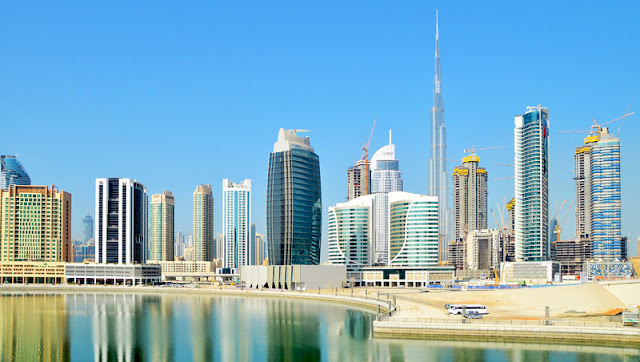Dubai, the iconic city of dreams, has transformed from a humble trading post to a global economic hub within a few decades. Fueled by visionary leadership, strategic planning, and relentless innovation, Dubai's economy thrives across diverse sectors. In this blog post, we'll explore the main industries driving Dubai's remarkable growth, highlighting their contributions to the city's economic landscape.
1. Real Estate and Construction:
Dubai's skyline is a testament to its real estate and construction prowess. The city is renowned for its awe-inspiring architecture, luxury developments, and innovative projects. From the world's tallest building, the Burj Khalifa, to ambitious developments like the Dubai Creek Harbor and Expo 2020 site, real estate remains a cornerstone of Dubai's economy.
2. Tourism and Hospitality:
Dubai's allure as a global tourist destination is unparalleled. From luxury resorts and shopping extravaganzas to cultural attractions and entertainment hubs, tourism drives significant economic activity. Iconic landmarks like the Burj Al Arab and Palm Jumeirah, along with events like the Dubai Shopping Festival, contribute to the city's status as a must-visit destination.
3. Finance and Banking:
Dubai's role as a financial hub in the Middle East is bolstered by its strategic location and business-friendly policies. The Dubai International Financial Centre (DIFC) is a prominent financial free zone that houses numerous banks, financial institutions, and professional services firms. Its favorable regulations and modern infrastructure attract global investors and businesses.
4. Technology and Innovation:
Dubai's commitment to technological advancement is evident in initiatives like the Dubai Smart City project. The city aims to harness cutting-edge technologies to enhance urban living and drive economic growth. Dubai's focus on innovation has led to the rise of a vibrant tech startup ecosystem and the hosting of events like GITEX Technology Week.
5. Logistics and Trade:
Dubai's strategic location between East and West has transformed it into a global logistics hub. The Jebel Ali Port, one of the world's largest man-made harbors, facilitates international trade, while Dubai International Airport is a key transit point for passengers and cargo. The city's free trade zones also play a crucial role in attracting businesses engaged in import and export.
6. Aviation and Aerospace:
Dubai's aviation sector has soared to new heights, with Emirates Airlines becoming one of the world's largest and most luxurious carriers. The city's investment in aviation infrastructure, including the Dubai World Central Airport, positions it as a major player in the aerospace industry.
7. Healthcare and Medical Tourism:
Dubai's healthcare sector is booming, driven by a growing population and an emphasis on quality medical services. The city's world-class healthcare facilities have contributed to the rise of medical tourism, attracting patients from around the globe seeking advanced treatments and procedures.
8. Renewable Energy:
Dubai's commitment to sustainability is evident in its pursuit of renewable energy sources. The Mohammed bin Rashid Al Maktoum Solar Park, one of the largest solar energy projects in the world, is a testament to the city's dedication to clean energy and environmental responsibility.
FAQs:
Q: Is Dubai's real estate market only focused on luxury developments?
A: While luxury developments are prominent, Dubai's real estate market encompasses various segments, including residential, commercial, and affordable housing.
Q: How does Dubai attract tourists from diverse backgrounds?
A: Dubai's diverse attractions, from cultural experiences to world-class shopping, cater to a wide range of tourists, ensuring there's something for everyone.
Q: Are there opportunities for startups in Dubai's technology sector?
A: Yes, Dubai's technology ecosystem encourages startups through initiatives, accelerators, and events that foster innovation and entrepreneurship.
Q: How does Dubai's focus on sustainability benefit its economy?
A: Dubai's commitment to sustainability enhances its global reputation, attracts environmentally conscious businesses, and fosters long-term economic growth.
Q: What role does infrastructure play in Dubai's economic growth?
A: Modern infrastructure, including ports, airports, and transportation networks, facilitates trade, tourism, and business operations, driving economic prosperity.
Q: How does Dubai support the growth of the healthcare sector?
A: Dubai's investment in high-quality healthcare facilities and medical expertise has positioned the city as a hub for medical tourism and advanced healthcare services.
Conclusion:
Dubai's economy is a dynamic tapestry woven from a myriad of industries, each contributing its unique threads to the city's growth and success. From real estate and tourism to finance, technology, and renewable energy, Dubai's dedication to innovation and progress ensures its position as a global economic powerhouse. As the city continues to evolve and adapt, the future promises even greater opportunities for both local and international stakeholders.

